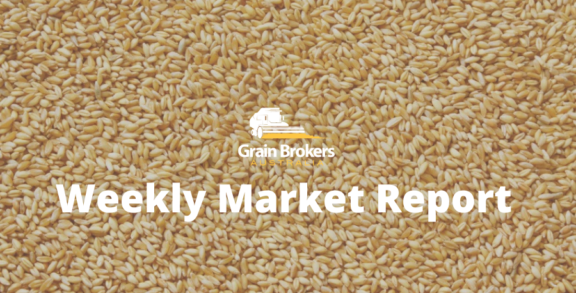Farmers and grain merchants across the globe are facing the daunting prospect of drastically reduced grain demand from China, the world’s biggest annual importer of agricultural produce, as the second-largest international economy struggles with an aging population, a significant real estate downturn, slowing consumer spending, and growing geopolitical tensions.
The housing bubble in China’s was the largest the world has ever seen. At its peak, housing represented 29 per cent of the nation’s GDP. And it was primarily financed with borrowed money as disposable incomes are meagre. In July, new home prices in 70 major Chinese cities shrank by an average of 4.9 per cent, worse than the 4.5 per cent fall in June. It was the 13th straight month of falls and the fastest pace since June 2015, despite numerous attempts by Beijing to ease the impact of the protracted property weakness and fragile economic recovery.
China’s population reportedly peaked at 1.4 billion in 2021, with just 45 per cent of those people considered working age. China’s National Bureau of Statistics reported earlier this year that births in 2023 totalled 9.02 million, around half the birthrate recorded in 2017. With deaths last year of 11.1 million, up 500,000 from 2022, China’s population shrank by 2.08 million in 2023. This follows a fall of 850,000 in 2022 and marks the first consecutive years of decline since the great famine of 1959-1961.
China also has one of the fastest growing aging populations in the world due to longer life expectancy and falling fertility rates. The proportion of the populace exceeding the age of 60 is expected to reach 28 per cent by 2040, with the huge demographic shift presenting many challenges for Beijing.
The decreasing and aging population, in conjunction with sluggish confidence, is weighing significantly on consumption and capital spending. Households are cutting back on meat consumption, in particular pork, and sacrificing restaurant meals. Consequently, the amount of grain required to feed the massive but declining pig herd has fallen, as has the quantity of oil required to fry food.
Investment in fixed assets slowed in the first seven months of 2024, while consumer spending remained weak despite a seasonal uptick in July. Capital spending by state-owned enterprises over the same period was down 7.4 per cent compared to a year earlier, while that of private firms slowed to a trickle.
The construction of grain warehouses has been a major focus of the state’s capital spending programs in recent years. Total capacity is reported to have exceeded 700 million metric tonne by the end of 2023, an increase of 36 per cent since 2014. Nevertheless, grain storages facilities across the country are reportedly overflowing with domestically produced and imported grain as demand fades with the slowing economy.
China’s purchases of Brazilian corn have decreased in recent months, and buyers have yet to switch to US corn to fill the void, reflecting a general downturn in demand. China imported 12.56MMT of corn in the first eight months of 2024, a decline of almost 16 per cent compared to the same period last year. Imports in the first four months were stronger than in 2023, but arrivals have been much slower since May with the year-to-date shortfall growing through to the end of August. China has not purchased meaningful volumes of US corn since early this year.
China is currently harvesting what is forecast to be its fourth consecutive record corn crop. However, that in itself will not necessarily discourage imports as foreign supplies can be cheaper than domestic ones when global prices are relatively low. Additionally, the recent decrease in China’s corn purchases does not reflect trends in other grains, with the discharge of wheat, barley and sorghum vessels in 2024 up notably from last year.
However, Beijing has asked domestic traders to buy less foreign grains as ample supplies and weaker-than-expected demand weigh on prices and threaten its longstanding policy to support local growers. The government summoned major importers to meetings late last month and reportedly suggested they halt purchases of barley and sorghum. The move is the latest effort by China to ease domestic oversupply and boost local prices.
China is the world’s biggest importer of barley and sorghum, and any sustained limits on imports would be a significant blow to farmers in major exporters of these commodities, such as Australia and the United States. Barley and sorghum shipments that have already been booked are not affected, with the new measures likely to impact arrivals from November and into the first quarter of next year. Earlier this year, authorities also asked traders to limit foreign purchases of corn as local supply swelled, which is reflected in the above-mentioned import data.
Meanwhile, China imported a record 12.14MMT of soybeans in August, with 10.24MMT or 84.3 per cent originated from Brazil. US soybeans accounted for 202,000 metric tonne, or just 1.7 per cent of the August program. In the eight months to the end of August, China imported 53.8MMT of Brazilian soybeans, up 217 per cent on the same period in 2023, while imports from the US were down 73 per cent to 12.8MMT. Speculation suggests the strong demand may reflect concerns that trade tensions with the US could escalate if Trump were returned as president in November.
Export data from the Australian Bureau of Statistics reveals that July was the first month since February 2021 that no bulk shipments of wheat departed for Chinese ports. While still the biggest buyer of Australian wheat, shipments to China in the ten months to the end of July were down 46.7 per cent to 3.74MMT compared to a year earlier.
Shipments of Australian barley to China now total 6.19MMT since trade resumed in late August last year. But exports in July were the second smallest monthly total in the past twelve months at 287,000 metric tonne, with a downtrend evident. Shipments in the current marketing year, which commenced in October 2023, are just over 5.1MMT.
On the other hand, shipments of Australian sorghum to Chinese ports remain buoyant, with July tonnage of 406,000 metric tonne the biggest monthly total since May last year. That said, exports of 1.33MMT in the 2023/24 marketing year-to-date are running 18.7 per cent behind the previous corresponding period, and the recent government guidance is yet to hit the available export data.
The impact of China’s demand contraction is already being felt. With this season’s harvest already underway, the US has yet to sell a full cargo of new crop corn, French barley shipments to China have been tumbling, and Canadian exporters are on the nose. In Australia, grain farmers and exporters alike are getting very nervous, with the winter crop harvest just around the corner and the country’s biggest grain buyer refusing to pick up the phone.
Call your local Grain Brokers Australia representative on 1300 946 544 to discuss your grain marketing needs.
Written by Peter McMeekin.





